Within the climate of modern gaming, disabled gamers are often overlooked by video game developers. Mechanics such as motion control and the inability to remap button configurations for controllers are merely two examples of what may limit gamers with disabilities, myself included. Games like Pokémon: Let's Go, Pikachu! and Let's Go, Eevee! for the Nintendo Switch are no exception to this trend.
I'd like to begin this accessibility discussion by offering a glimpse into my own relationship with the Pokémon franchise. I've played Pokémon since I was in the fourth or fifth grade. From that point, I've continued to foster a profound love for the games and characters.
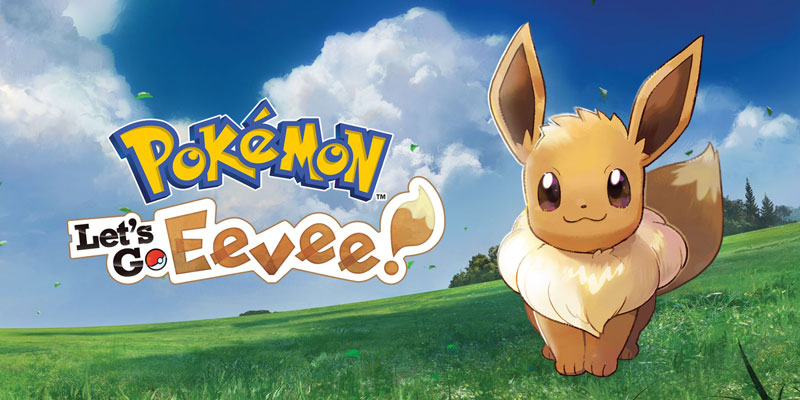
As a disabled gamer, a video game's accessibility plays an integral role in my experience, which largely affects my ability to enjoy the title. Traditionally, Pokémon has upheld a simple control scheme. The player moves their character via either the D-pad or the analog stick. Actions are selected with the A button, and are cancelled with the B button. Pressing Start brings up a menu, which allows the player to access all of the important aspects of the game, including the player's Pokémon, items, and even game options such as text speed and the ability to save. Until recently, the games have not been time-sensitive, meaning that the player's experience was never rushed by a timer.
When I heard that Game Freak, Pokémon's developer, was working on a remake of Pokémon Yellow, I was ecstatic. After watching the game's trailer for the first time, I felt that the art design was perfect. It was how I had always envisioned the games should look. Then, the catching mechanic was revealed. I was taken aback because for the first time in the history of the Pokémon franchise, the player is forced to use motion controls to capture Pokémon. What was even more polarizing to me was that the entire game seemed to be focused around this mechanic.
Exclusionary Immersion
Let's Go! marks the first time in my life when I didn't preorder a new installment in the franchise. Prior to my purchase, I even reached out to Nintendo, told them about my disability, and inquired about alternative control methods. Through live chat, a representative simple informed me that there are no alternatives to motion control. I was upset after learning that bit of information. After the game's release, I started to watch videos of able-bodied people playing the game. My sadness quickly turned to anger. On a whim, I decided to go to my local GameStop and purchase Pokémon: Let's Go, Eevee!. I voiced my concern about the game to the manager, and to some of the employees. The manager assured me that, if I couldn't play the game, they would give me a full refund. My customer experience with GameStop was significantly more pleasant than my brief exchange with Nintendo. However, I didn't want a refund. What I wanted was for Nintendo and Game Freak to not exclude me and other players who may find themselves in similar situations.
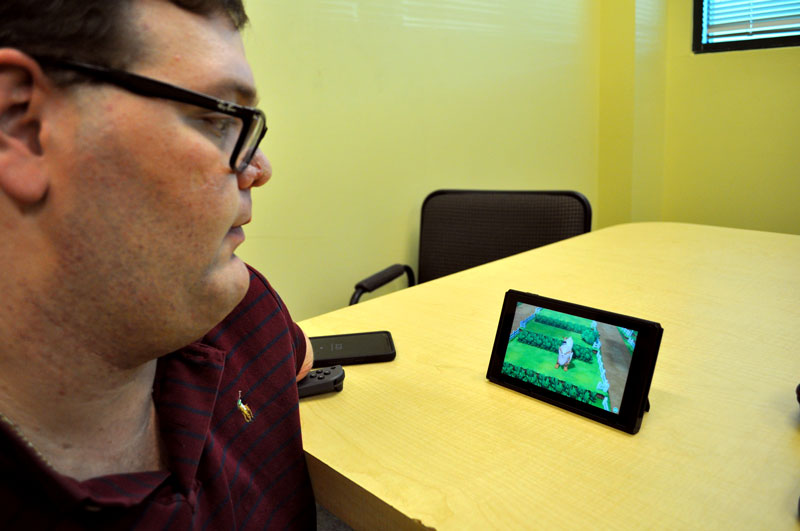
After my purchase, I returned home. With a sinking feeling in my stomach, I asked my dad to help me open the game and give me the Joy-Cons. I put them on the table that I use to play video games, and turned on the console. Upon startup, the game prompts the player to choose from a variety of controllers, including: the left or right Joy-Con, an additional controller called the Pokéball Plus, or both Joy-Cons at once (which can only be used if they remain attached to the Switch, in handheld mode). All controller options, except for playing the game in handheld mode, require the player to make a throwing motion with the controller (handheld mode still requires the player to physically move the console through space). I certainly can't hold the console and move it around. When I can play with the right Joy-Con, it does take a considerable amount of time and physical effort.
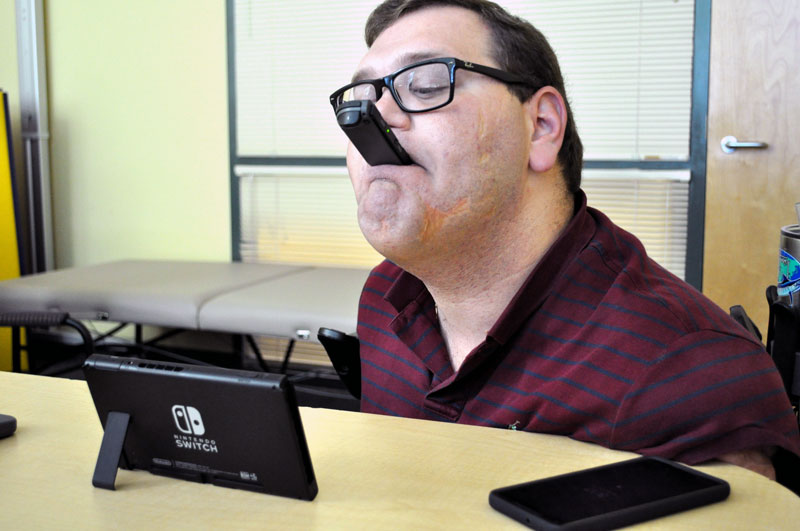
Because I'm a quad-amputee, I can't use the Switch's Joy-Con controllers as Game Freak intends. While I can access the buttons and analog sticks, I can't make the motion needed to capture a Pokémon. Well, I can, but it is considerably difficult. To catch a Pokémon, the player first has to select the "Get Ready" option by highlighting it with the analog stick and pressing the A button. Once selected, the player is prompted to perform a throwing motion. For someone without hands, this feat is problematic at best. In my case, I play by holding the controller between my chin and my shoulder, or by resting it on a tabletop. I select "Get Ready" with my lip, my chin, or my arm, and then I have to transfer the controller to my mouth. To actually throw the Pokéball, I must move my head from a downward position to an upward position with considerable speed and accuracy. If the Pokéball misses the Pokémon that I'm intending to catch, which happens more often than not, I have to transfer the controller from my mouth to either my chin or the table, select "Get Ready" again, and transfer it back to my mouth before making another attempt. Because Pokémon can run away from the player if they take too long, I've failed to catch a large number of Pokémon that I've encountered. Since catching Pokémon is the most important aspect of the game, this problem is extremely negative and significantly impacts my experience of the game. In short, Pokémon: Let's Go! punishes me for my physical limitations.
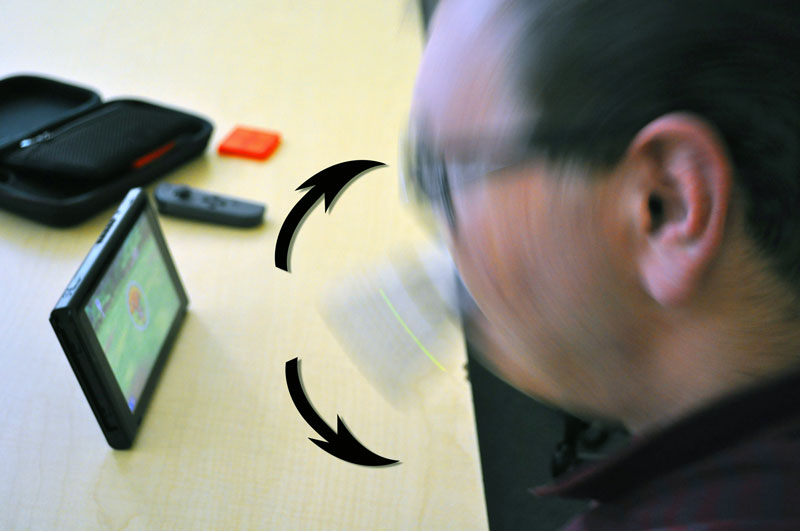
The purpose of this blog post isn't to offer an inspirational story about "overcoming" my disability. Yes, I can play Pokémon: Let's Go!. Yes, I enjoy most aspects of it. No, I'm not at all satisfied with the catching mechanic that drives the game. Both able-bodied and disabled players are forced to experience the game in a very regimented manner. The player must meet a certain level of physical criteria or they simply cannot play the game. In the age of Microsoft's Adaptive Controller, limiting the player in such a way is inexcusable. I have heard Nintendo say that Pokémon fans may not be happy with this game. The company's response to this outcry is that the title isn't for everyone. To be blunt, this game isn't for everyone because it seeks to exclude gamers who can't use specific controllers in a very specific way. This game can't be for everyone if its mechanics are inherently exclusionary!
Fully One-Handed Gameplay
Yet, and I can't stress this enough, I can't help but love Pokémon: Let's Go!. The games do a fantastic job of capturing the magic that I initially felt as a child. While the catching mechanic is ostracizing at best, there is something to be said about the controller options. To my knowledge, this is the first time in Nintendo's long history where the player has the option to play one-handed. This option is incredible for one-handed gamers, since they can access every feature of the game with a single Joy-Con.
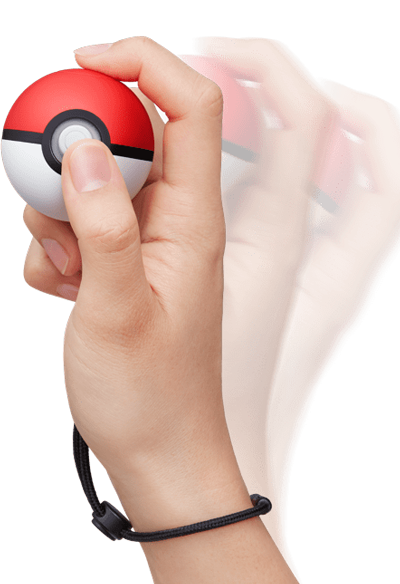
The Pokéball Plus also offers an even different method of playing the game. For players that may find it difficult to hold a Joy-Con, the Pokéball Plus may be an easier alternative. However, its $49.99 price point can be financially limiting. Since it is in the shape of a ball and is smaller in size, this may be a welcome change for some gamers with disabilities. You can find more product information regarding the Pokéball Plus, including its size, weight, and other features here. In every controller scheme (except in handheld mode), the player never has to move their thumb, finger, lip, chin, etc. from the analog stick. Depending on the amount of pressure that the player can apply, the analog stick on both the Pokéball Plus and the Joy-Cons can be pressed, which translates to pressing the A button. A section at the top of the Pokéball Plus houses another button. On the Joy-Cons, ZR or ZL double as the B button as well, in case the buttons on the face of the controller are too difficult to reach.
Unfortunately, the only way to know whether you'll be able to play Pokémon: Let's Go, Pikachu! and Let's Go, Eevee! will be to try them. Watch YouTube videos of players using the controllers, and gauge whether or not their actions will look accessible to you. And if you are experiencing difficulty, feel free to reach out to Nintendo, as I did. Though nothing may immediately come of your initial interaction with the company, who knows what the future may bring? The only way to get companies like Nintendo to listen is to bring accessibility-related issues to their attention. You could certainly write them a letter, tweet at them, upload a YouTube video and tag them in it, or even write a blog post like this one, and tag Nintendo on all forms of social media. The time to demand inclusive changes is upon us. Let's band together, Trainers. With each other's support, hopefully we can catch 'em all!
About the Author
Around the age of one, I contracted bacterial meningitis. When I was three, I began using a power wheelchair. I've always embraced my disability and taken pride in knowing that I was different than my peers. My desire to learn more about disability led me to study critical disability theory both as an undergrad and a graduate student. I've always been passionate about gaming, which influenced me to write my Master's thesis on accessibility and video games as it relates to gamers with disabilities. In my spare time I love competing in local tournaments for Super Smash Bros., reading fantasy and sci-fi novels, and writing.
Kyle's ride is a QUICKIE S-636.
Most of the stories here on LiveQuickie.com were submitted by readers. Do you have a story to tell? We'd love to hear it. Submit your story here.